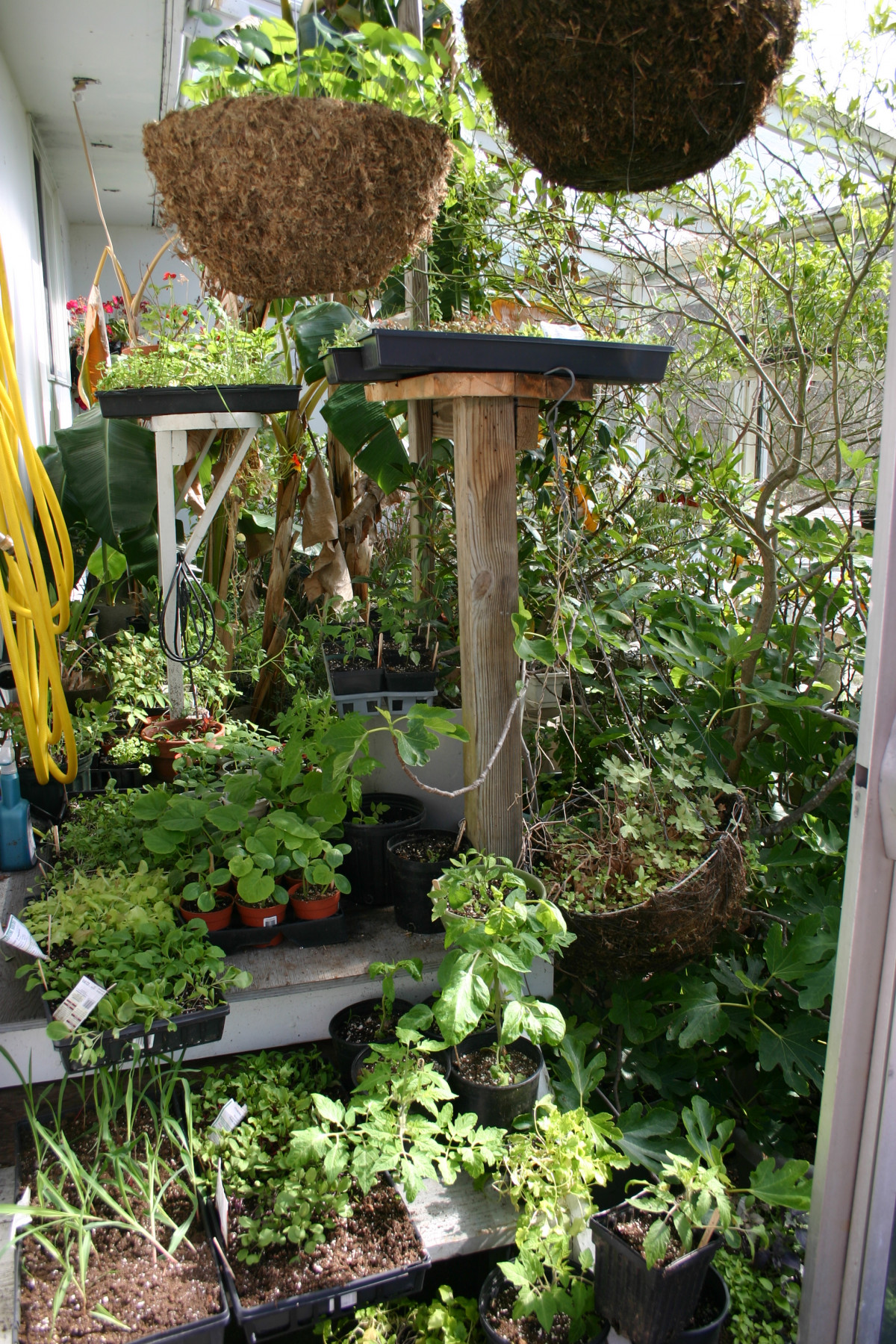
It doesn’t matter whether you have a large or small, old or modern greenhouse, you will use potting soil. I use a lot of potting soil, bales of it in fact. I’m talking about real potting soil. Mixtures that are instead called “garden soil,” or something similar, are a different animal entirely. They can contain all kinds of ingredients that are often not well suited to growing potted plants. Garden soil from your garden is also unsuitable. It is not very porous, tends to clump up and often does not have enough organic matter. A potting soil, in contrast, is made to meet the needs of plants in pots. It typically contains peat moss or ground coconut coir, ground pine bark, and perlite or vermiculite. Each of these serves a particular function in creating a medium for potted-plant growth.
In a good potting soil, peat moss provides bulk and acidifies the mix. But because peat bogs in Europe are becoming depleted, many potting soil manufacturers are now using ground coconut husks (coconut coir) in their mixes. It can take up to 25 years to replenish a peat bog, whereas coconut coir is a constant byproduct of coconut harvesting. While the price of peat vs. coconut coir is about the same, coconut-based mixes tend to be slightly more alkaline (pH of 6 to 7) than do peat-based ones (pH of 5.2 to 6). Coconut coir also wets out more easily than peat does, but it holds only about 2/3 as much water when fully saturated. In addition, coconut coir tends to contain more potassium than does peat moss, and too much potassium can interfere with calcium uptake in your plants. However, most manufacturers know this and include additives to alleviate this potential problem.
Ground pine bark is another basic ingredient in potting soils. So expect to find some of it in any potting soil you buy. Like peat or coconut coir, it too acidifies the mixture and provides a lot of bulk. The more finely ground the pine bark is, the better the mix seems to be.

Perlite or vermiculite is always part of a potting mix as well. These are volcanic rocks that are heated to the point at which they expand and become very light. They are added both to lighten the potting soil and to absorb water and release it slowly into the other components. Note that both perlite and vermiculite can also absorb chloride from tap water used in watering your plants, and these chlorides can sometimes build up and eventually damage the plants. So take care that the water you use doesn’t contain an unusually high concentration of chlorides, as might occur if you have a water softener.

Other ingredients are also quite common in potting soils. One is time-released fertilizer to help plants grow. This fertilizer can be a useful additive in replenishing the nitrogen that gets absorbed by rotting wood products in the mixture. Some potting soils now also contain “moisture retainers.” These are chemical gels or treatments that help the potting soil retain water. Such “retainers” allow you to be away for a time and still keep your plants hydrated. Bear in mind, though, that these moisture retainers eventually break down, so don’t count on them being there forever.
If you’re concerned about pathogens in potting soils, you needn’t worry much. Most of the potting soil that you purchase in garden stores has been heat treated to eliminate pathogens and bacteria. Of course, when you open the bag of potting mix, the soil is immediately exposed to airborne pathogens and bacteria, as well as to those on your hands or on your garden tools. Fortunately, allowing the soil to dry out reduces most of these.


